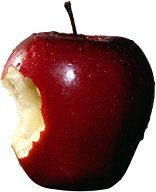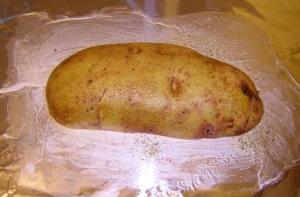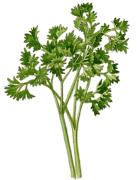
A nice red apple
Cold weather and hot apple cider seem to go hand in hand. But apples are good for more than just cider. There is a great deal of truth to the old adage: “an apple a day keeps the doctor away.”
Apples are high in fiber (if you don’t peel them) and vitamin C while only packing around 80 calories. You won’t find any fat, cholesterol, or sodium in an apple either. So let’s take a look at what the humble apple can do for you:
- Apples contain two types of fiber. The first works just like wheat bran pulling the bad LDL cholesterol out of your body. The second, pectin, helps to reduce the amount of LDL cholesterol that your liver produces. Lowering your LDL levels can go a long ways towards cardiovascular health.
- Pectin can do many other things for your health too. For example, it can help to pull toxins out of your system. Except for the few people living out in the open country, most of us are exposed to many harmful toxins on a daily basis. Pectin is also great for regulating your digestion; in other words, if you are constipated it will help to move things along, or if you have diarrhea it will help to slow things down.
- The component that gives apples their lovely color, flavonoids, also confer health benefits. The skin of an apple is an excellent source of a potent flavonoid called quercitin which studies have found helps to reduce heart disease. Quercitin is a type of an antioxidant which, especially when combined with vitamin C (also found in apples), reduces the damaging effects of free radicals in the body.
- The sugar in apples is in the form of fructose which is a very simple sugar. Because your body takes a long time to break down fructose it helps to keep the blood sugar levels stable. If you or someone you love is diabetic or near diabetic, then you should consider adding apples to the diet.
- Another benefit from apples can be found in the juice: reducing the risk of kidney stones. Those who suffer from calcium oxalate kidney stones would do well to add apple juice to their daily diet.
- One interesting study I found was done in Australia where they found that adding apples and pears to the diet reduced the effects of asthma.
Staying healthy doesn’t require fancy, and expensive, pills. A few simple additions to your daily diet can go a long way to keeping you healthy and happy.
Interested in more information? Check out these sources:



